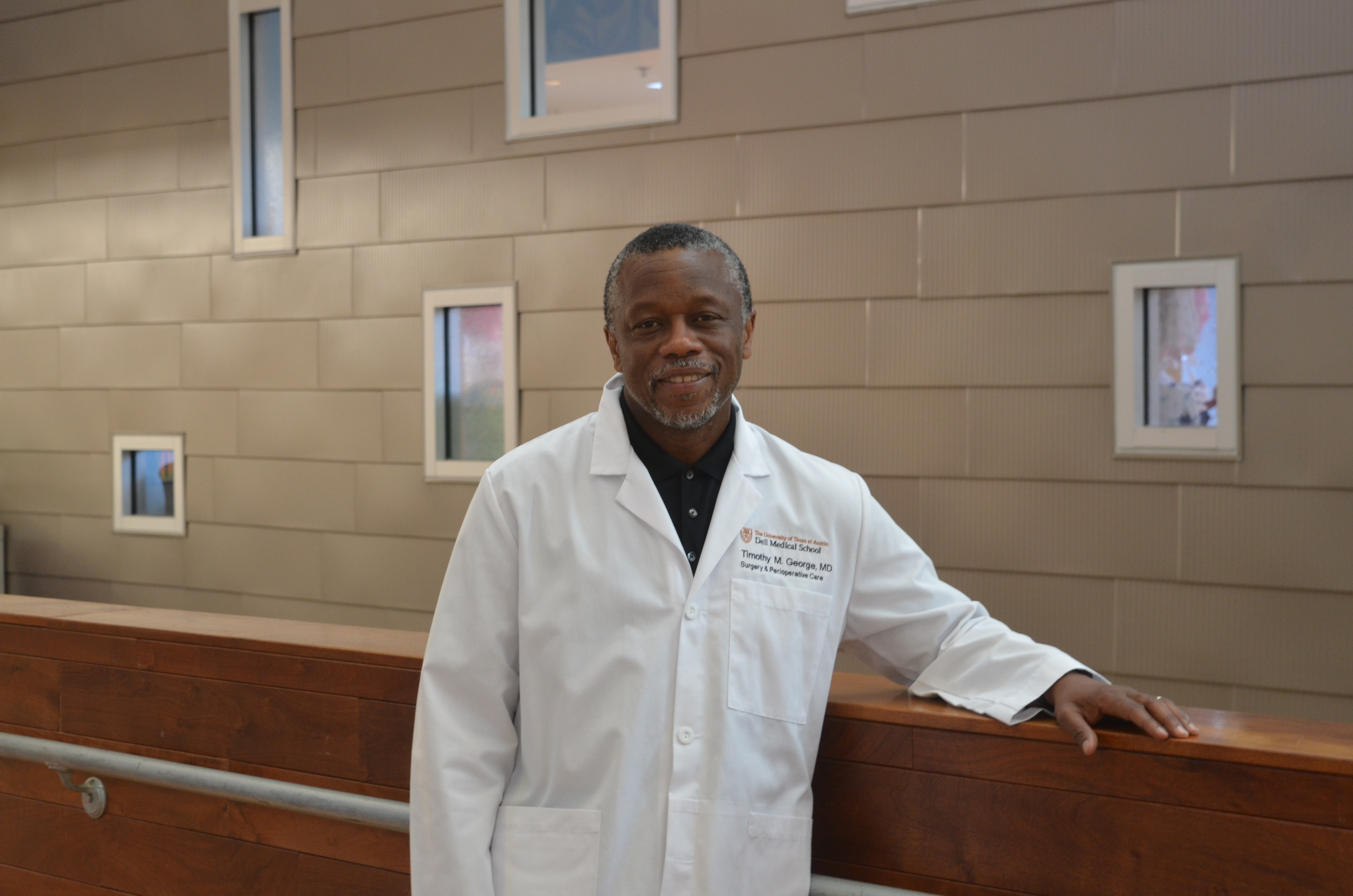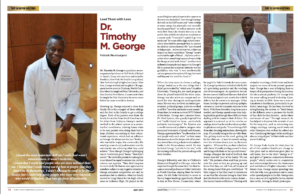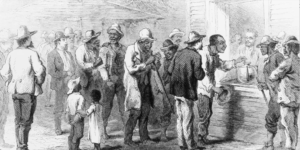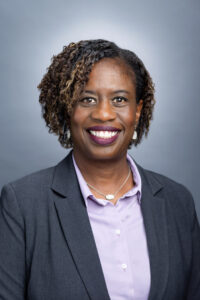
Dr Tim George, May 2019, Austin Black Business Journal
It is with great sadness that we inform you of the passing of Dr. Timothy “Tim” M. George, 59, Pediatric Neurosurgeon. Dr. George was honored by Austin Black Business Journal in May of this year, he was also featured in the May issue. Dr George was named one of the Top Ten SUPER Doctors in Central Texas in May of this year. Please keep Dr. George’s family in your thoughts as they go through this difficult time.
Dr. George was a professor at Dell Medical School in the departments of neurology and surgery and perioperative care. He also served as Chief, Pediatrics Neurosurgery at Dell Children’s Medical Center.
Racer.com reported that Dr. George experienced a medical issue near the mid-point of today’s four-hour Michelin IMSA SportsCar Encore at Sebring International Raceway. He was transported to a local Sebring hospital where he passed away.
The medical emergency occurred while George was driving the No. 2 Ansa Motorsports LLC prototype race car. There was no known mechanical issue with the car. George was able to drive the car onto pit lane where he was immediately attended to by track medical personnel.
Austin Black Business Journal (May 2019)
Lead Them with Love
Dr. Timothy George
Pediatric Neurosurgeon, Professor
Dell Medical School, Austin, Texas
Dr. Timothy George is a pediatric neurosurgeon and professor at Dell Medical School in Austin, Texas, who was born and raised in Brooklyn, New York. He lived in Long Island, New York during his high school years. After that, George worked and taught in Chicago, spent twelve years in Durham, North Carolina where he taught at Duke University, and then lived in New Haven, Connecticut when he taught for Yale University for seven years before he came to settle in Austin.
Growing up, George enjoyed a close-knit family. He is the youngest of three siblings and the first in his family to get a college degree. Both of his parents were from the South, his mother from South Carolina and his father from Alabama. George’s mother worked in the school system as a parent-teacher coordinator, making house visits to be sure parents were doing their best to keep children succeeding in their educational experience, which had an influence on George. He always saw her as a “leader…who wanted to impact the community. She would go around and push to make sure the community was achieving what they could achieve.” Even though George’s upbringing was in “a relatively poor” home, “that didn’t matter.” He credits his parents for raising him to see himself as equal to anyone else, neither inferior nor superior. “They didn’t impress on me in daily life that we were oppressed or somehow subject to any negative situation.”
George remained competitive, not only in academics but in athletics, when his family moved to Long Island for his high school years at Lutheran High. He played on the second highest ranked team in the country in division one basketball. Even though George did well on his SAT exam and “went to help at some camps for physically and mentally handicapped kids” as well as summer work with New York City Health Services in the public labs with his mind set on medicine as a career path, “I was told I couldn’t go into medicine” by some of his high school counselors who tried to persuade him to pursue his athletic talents instead. He “just wanted to help people…to live and survive, to have an impact on those conditions.” George “wasn’t scared at the sight of blood…My knee-jerk reaction when something happened was to help fix things or deal with them.” Another very influential example and support in George’s life to pursue his academic interests was his godfather, who was “a very intellectually curious person who explored things that went well beyond the world he lived in.”
When the time came to choose a college, George “ended up at the one college that I didn’t get recruited by,” which was Columbia University. During his pre-med program there, he played basketball for three years. George was also active on campus and enjoyed his time during his undergraduate years. He was very involved in student government, political groups, and even worked as a DJ to “have fun and make some money.”
From there, he went on to attend NYU School of Medicine. George met a mentor there, Dr. Fred Epstein, who greatly inspired him and “really helped me focus…particularly pediatric neurosurgery.” Dr. Epstein was a world-renowned pediatric surgeon who pioneered treatment of spinal cord tumors. George appreciated how “he allowed us to be real people with each other” in their many discussions about the deeper side of his journey toward becoming a doctor and academic leader in the Neurosciences world. He also included George, “put him in the mix,” with the nursing staff and the patients along with their families.
George’s fellowship sent him to Children’s Memorial Hospital in Chicago, where he stayed and taught for some time. He then became a tenured professor at Duke University in North Carolina, staying there for twelve years. He left Duke University to move to the ivy league teaching opportunity offered to him in New Haven, Connecticut, where he taught for Yale University for seven years.
Dr. George’s profession includes both the life of a practicing specialist and the teaching side of neurosurgery. As a pediatric doctor, he sees cases of childhood diseases that affect the brain and spinal cord, mostly due to birth defects that he corrects or manages. Other times, he helps to prevent and stop epileptic seizures or care for traumatic injuries to the brain. With these disorders, long term care is needed, and George spends more time helping families get through these difficult times dealing with the issues in their children. His approach is summed up in his creative car analogy about how he sees his role as a pediatric physician and guide: “It is not being a GPS from afar, shouting instructions, showing the map. It’s actually being in the car with them. Yes, getting stuck on the road, getting hit by the other car…It may be smooth sailing, turn the windows down, turn up the music together…Whatever it is, you have to be there with them. It’s really putting yourself in there and living with them on the ups and downs.” George often gets the kind of feedback that makes him feel “part of the family. We can talk.” His patients often send him pictures over the years as they are growing up and know that they can call him, all because of the strong bond that gets established. “If their impact is that they want to include me or see that I’m a human being in their lives just like that favorite uncle, cousin, friend…that means I made a difference.” Dealing with obstacles involving a child’s brain and brain surgery are some of most parents’ greatest fears. George has a way of helping them to keep it all in perspective during the journey.
We recommended Prednisone at https://lafayettesurgical.com/buy-prednisone/ to patients who have problems with immune system and inflammation going on. With right instructions and dosing it helps to manage all of those for a short term. The full treatment should be prescribed by your attending doctor, otherwise if might result sever. The thing is that it may cause addiction, sugar raise and lack of calcium.
On the academic platform, Dr. George feels the same calling toward leadership. Coming to Austin in 2006, there was a state of transition in healthcare, particularly in pediatric neurology. He has been involved in strengthening the system, to “build teams in the different areas to promote the health of that child for that disorder…in the whole continuum of care.” Through research, he has helped to improve this network of care for the long term, such as connecting neurology, oncology, nursing, social work and other therapies even within the school system. Continuing the legacy in his teaching is also an integral part “of that whole machine you’re building.”
Dr. George finds Austin the ideal place for all of this positive healthcare change to take place and an otherwise great place to call home, due to the city’s “energy to it” and spirit of “genuine connections between people,” which carries over to cooperation and relationships between the businesses and institutions of higher education. In his leisure time, George enjoys spending time with his wife, sons, grandsons and so many other special people in his life. George also has a race car driving hobby he has started later in life, driving Le Man’s prototypes.





